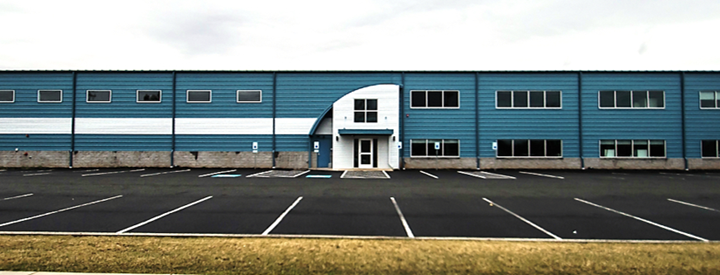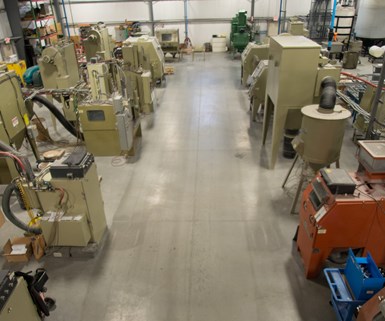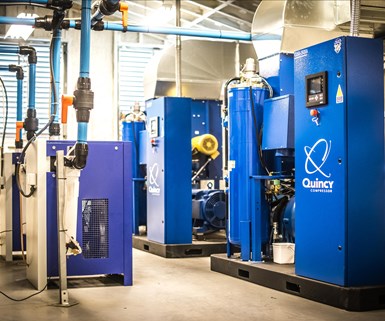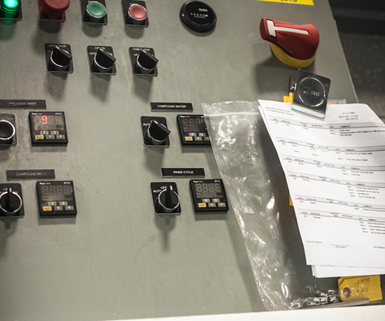Precision Finishing Opens New Addition, Capabilities
A 40,000-square foot-finishing facility that was up and running in 2017 with new equipment, processes and capabilities from the previously constructed facility in 1955.
Precision Finishing in Quakertown, Pennsylvania, designed and constructed a 40,000-square-foot finishing facility that was up and running in 2017 with new equipment, processes and capabilities from the previously constructed facility in 1955.
The new building was purpose-built to support the company’s business strategy to work with customers in providing certified subcontract finishing and secondary services, as well as engineer processes; supplying finishing materials; and engineering turnkey system solutions to their customers.
Welcome! You’ve unlocked premium content.

A 40,000-square-foot finishing-facility that was up and running in 2017 with new equipment, processes and capabilities from the previously constructed facility in 1955.
The production area is 15,000 square feet, with new and upgraded finishing equipment. The manufacturing area for the company’s Chemtrol Industrial Compounds product line is 10,000 square feet, with a warehousing and shipping area of 10,000 square feet. The offices with conference rooms and a cafeteria total 7,500 square feet for administration and customer services.

In addition to pressure monitoring, proximity sensors are used with some equipment to automatically feed abrasive when a specific amount of media is consumed, keeping a consistent grain size specification
Company officials say the production facility’s design increases visibility, safety, quality and efficiency from the previous location. From manual batch processing capabilities to fully automated inline processing equipment, the facility adheres to a strict ISO quality program ranging over extensive part types, materials and sizes, including stampings, extrusions, weldments, additive manufactured components, castings, powdered metal components, forgings, precision machined components and drawn parts.
“One of the keys to successful quality and volume project management is process control,” says Jeffrey Bell, technical process engineer at Precision Finishing. “We continuously monitor and log equipment data points, ranging from differential pressures, dust collection, amplitudes, temperatures, air quality, equipment wear and more, as well as incoming and outgoing part specifications based on several variables set in the initial process development.”
In addition to pressure monitoring, proximity sensors are used with some equipment to automatically feed abrasive when a specific amount of media is consumed, keeping a consistent grain size specification. The use of technology allows operators to focus more on part quality to lower the rejection rate and increase operational efficiencies.

The use of technology allows operators to focus more on part quality to lower the rejection rate and increase operational efficiencies.
Custom-designed control panels are outfitted to many of Precision’s vibratory processes. These units are fitted with variable-speed controllers, timers and PLC units for multiple-step processing, rinsing, directional control, draining and internal separation dam control.
These panels ultimately help to dial in a process for optimum processing parameters. Operators can manipulate RPM, amplitude, water levels and dosing requirements to handle a huge array of part requirements.
“Automation is definitely not everything, and everything doesn’t need automation. However, when it makes sense, we will do what we can to make it happen,” Bell says. “Consistency and reliability are extremely important when dealing with critical tolerancing and part quality. Many processes can benefit from some level of automation, even if it is as little as ensuring you have a good quality digital timer that won’t accidentally stick on like its analog counterparts can do.”

Custom-designed control panels are outfitted to many of Precision’s vibratory processes. These units are fitted with variable speed controllers, timers, and PLC units for multiple-step processing, rinsing, directional control, draining and internal separation dam control.
A major key to the blast finishing operation is high-quality compressed air. The system was purposefully engineered to produce pure, consistent compressed air, with numerous contaminant removal procedures before the air reaches any blast or blow off unit. Twin 100 horsepower compressors feed refrigerated air dryers that condense moisture out of the air column, reducing ambient humidity in the feed lines as well as redundant oil coalescing filters. If moisture and oil were present, blast media can bind up and leave residue on the parts being processed.
Additionally, secondary moisture and oil coalescing units are fitted to each blast unit, doubling the redundancy to ensure clean, residue-free parts. The entire air transport is constructed with 2-inch diameter aluminum piping to accommodate a high volume of air flow. Aluminum piping is necessary to eliminate the threat of iron contamination from the more common black iron pipe.
Precision Finishing’s compressor room and two 1,500-gallon compressed air storage tanks feed the entire facility with energy-efficient utility air.
“We can continually focus on process improvement,” Bells says.
Precision Finishing also offers shot peening, shot blasting, spray washing, ultrasonic cleaning, inspection, packing and facilitation of secondary operations (such as heat treatment, anodizing, painting, plating and passivation) with a regular pickup and delivery service serving much of the surrounding areas.
Visit precisionfinishinginc.com.
Related Content
How to Maximize Nickel Plating Performance
The advantages of boric acid-free nickel plating include allowing manufacturers who utilize nickel plating to keep up the ever-changing regulatory policies and support sustainability efforts.
Read MoreA Chromium Plating Overview
An overview of decorative and hard chromium electroplating processes.
Read More3 Tests to Ensure Parts are Clean Prior to Plating
Making sure that all of the pre-processing fluids are removed prior to plating is not as simple as it seems. Rich Held of Haviland Products outlines three tests that can help verify that your parts are clean.
Read MoreAn Overview of Electroless Nickel Plating
By definition, electroless plating is metal deposition by a controlled chemical reaction.
Read MoreRead Next
A ‘Clean’ Agenda Offers Unique Presentations in Chicago
The 2024 Parts Cleaning Conference, co-located with the International Manufacturing Technology Show, includes presentations by several speakers who are new to the conference and topics that have not been covered in past editions of this event.
Read MoreEpisode 45: An Interview with Chandler Mancuso, MacDermid Envio Solutions
Chandler Mancuso, technical director with MacDermid Envio discusses updating your wastewater treatment system and implementing materials recycling solutions to increase efficiencies, control costs and reduce environmental impact.
Read MoreEducation Bringing Cleaning to Machining
Debuting new speakers and cleaning technology content during this half-day workshop co-located with IMTS 2024.
Read More














.jpg;maxWidth=300;quality=90)







